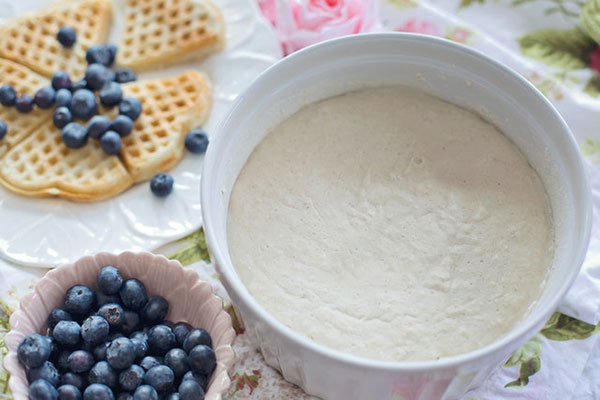
Many bread recipes include dinner rolls, pizza dough, and cinnamon rolls. Yeast is an important ingredient. It helps dough rise and creates soft, pillow-like bread.
It is used for baking purposes as instant or active yeast. This light brown powder is made from Saccharomyces cerevisiae yeast.
Dry yeast activates when it is exposed to water and sugar. It begins to eat the sugar and digest it. This creates carbon dioxide bubbles which get trapped in the dense dough. The carbon dioxide bubbles then expand at room temperatures or when heated, which causes the dough to rise.
This process, known as leavening, results in larger, fluffier, and softer baked goods that rise than those that don’t rise like flatbreads or crackers.
It may be a surprise to you that yeast is not required for this process. Many ingredients can replicate the yeast-like action in baking.
These are the top 3 yeast substitutes.
1. Baking powder
Baking powder is an essential ingredient in any baker’s kitchen. It usually contains cream of tartar and baking soda.
Baking powder reacts instantly to heat and liquid. Baking powder doesn’t require any additional rise time, unlike yeast. It can be used to make quick bread like biscuits, pancakes, and cornbread.
Baking powder can be used to replace yeast in baked goods. You should keep in mind, however, that baking powder won’t have the same leavening properties as yeast.
SUMMARY
Baking powder can increase the rise of baked goods, but not as fast as yeast. Baking powder can be substituted for yeast in a 1:1 ratio.
2. Baking soda and acid
Baking soda can be combined with acid to substitute yeast. Baking soda and acid can be combined to produce the same reaction as baking powder.
Baking soda and acid can be used separately, but they won’t make baked goods rise. You need to mix them for this reaction to take place.
You can substitute yeast for baking soda by replacing half the yeast with baking soda, and half with acid.
If a recipe calls to use 2 teaspoons yeast, you can simply add 1 teaspoon baking soda and 1 teaspoon acid.
Baking soda and acid do not need to rise, just like baking powder. However, the leavening properties of baking soda and acid will be less powerful than those of yeast.
SUMMARY
Baking soda and acid have the same reaction as baking soda, which results in a rapid rise. You can substitute yeast by using 50% baking soda and half the acid.
 3. Sourdough starter
3. Sourdough starter
A sourdough starter is made from naturally occurring yeast. It is made from flour and water. A sourdough starter can be used to make sourdough bread. The yeast’s natural fermentation process gives it a slightly tangy taste.
Some starters of sourdough are kept for years and continue to ferment to give artisan sourdough bread a strong flavor.
A starter sourdough yeast ferments the dough in the same manner as instant yeast. It forms bubbles of carbon dioxide that give the dough rise.
To replace a 2-teaspoon packet of yeast, you can make a cup (300g) of sourdough starter.
Reduce the amount you use of flour if the starter is too thick. If the starter is too thin, increase the liquid or reduce the flour until the starter has the right texture. The rise time for a sourdough starter is approximately twice that of yeast.
Starter sourdough should not be used if it contains any fuzz, white, or colored mold.
It takes at least 5 days to make a starter for sourdough. This yeast substitute works best if you have one on hand or can wait five days before baking.
SUMMARY
To replace 2 teaspoons of yeast, you can make 1 cup (300g) of sourdough starter. You may have to adjust the flour and liquid amounts in the recipe, as well as the time for the starter to rise. It will take you at least five days to make your own starter for sourdough.
The bottom line
You can substitute yeast with other ingredients if you need it.
Baking soda and baking powder react with an acid in liquid and heat to produce bubbles and leaven baked goods. These yeast substitutes are quick to react, so they don’t need to rise for long. They may not have the same rise effect as yeast.
You can also use a sourdough starter, which produces results similar to yeast. A sourdough starter requires approximately twice the time to rise and you will need to adjust the ratios of flour and liquid based on your starter’s thickness.
These ingredients won’t be able to replicate yeast in a recipe but they are great options if you don’t have yeast.




